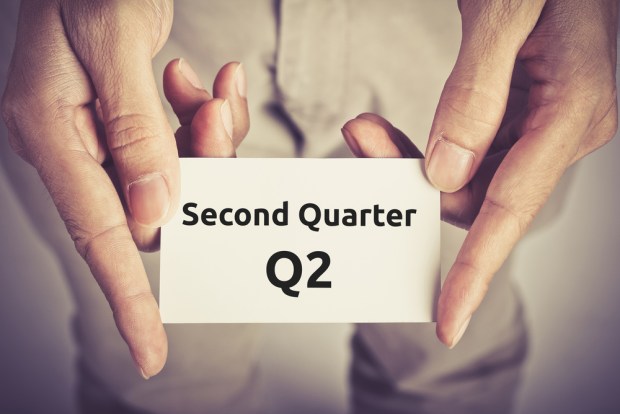What Q2 Earnings Say About Business Spend

Corporations will always put their best foot forward when releasing earnings data, but the stats revealed by members of the financial services community offer a window into the financial habits of their corporate customers. This week’s Data Digest unravels the latest Q2 2018 earnings performances by top financial institutions (FIs) and other B2B financial services players, and finds that corporate spending and borrowing appear to be on a rising path.
Bank of America (BoA) announced $2.3 billion in small business loans were originated by the FI in Q2. Other than that figure, BoA was mum on the performance details of its corporate and small business financial services. Overall, the company saw a 33 percent increase in Q2 profit, hitting $6.8 billion and surpassing earlier estimates. Bank of America said it was able to cut expenses during the quarter by 5 percent, again, beating forecasts.
Seven years have passed since U.S. Bancorp‘s corporate payment sales volume was this high. The bank’s Chief Financial Officer Terry Dolan said during its Q2 earnings call that corporate payment sales volume increased by 11.7 percent for the quarter, compared to the same period a year ago. Its corporate payment operations include commercial and digital payments, fleet cards, and corporate travel and expenses. Overall, U.S. Bancorp beat estimates with its $1.02 earnings-per-share, posting $5.6 billion in revenue. However, corporate payments were a particular standout for the bank. “The sales volume growth spend volume … this quarter versus a year ago, we’re up 11.7 percent,” Dolan said. “A year ago, those numbers were 6.4 percent, so it’s almost doubled in terms of the activity from a corporate spend perspective.”
A $9.9 billion revenue for JPMorgan‘s Corporate & Investment Bank represented an 11 percent increase, the FI said in its Q2 call. The unit also posted net income of $3.2 billion for the quarter. On the whole, the FI posted $8.3 billion in net income on revenue of $29.4 billion. Responding to a question on how geopolitical volatility might impact the banks’ performance on corporate and institutional services, Chief Financial Officer Marianne Lake said that trade disputes are “firmly part of the risk narrative,” though, at this point, has not caused businesses to alter their strategies or decision-making.
A 21 percent increase in Q2 net income for American Express was driven by an increase in corporate spend, the company said this week. The firm posted $1.6 billion in net income for the quarter, while consolidated total net revenues of interest expense reached a new record of $10 billion. “The increase reflected higher spending by consumer, small business and corporate Card Members,” Amex said in its earnings announcement. The firm’s Global Commercial Services unit, which handles small business and corporate cards, posted an 18 percent increase in net income, reaching $564 million. Total expenses for the unit were up 9 percent year over year, however, linked to rewards expenses, marketing and business development efforts.
A 30 percent year-over-year increase in cloud subscriptions revenue signals SAP‘s ongoing growth in the enterprise software segment. The company’s quarterly earnings report also revealed a 24 percent increase in new cloud bookings, though software revenue was down 9 percent year over year. SAP noted that its Q2 operating profits were up 13 percent, compared to this time last year. However, operating cash flow dropped by 16 percent, which SAP attributed to “currency headwinds,” stock-based compensation payments, and higher tax and insurance costs.
Its 315 percent increase in new bookings is a good sign for Tradeshift, which published its Q2 data this week. During the quarter, the company launched Tradeshift Pay — a collaboration with HSBC, Santander and other banks — to facilitate B2B payments within the Tradeshift supply chain management platform. The company didn’t post earnings or profits, though it did highlight a single $18.6 million deal closed in the quarter.
